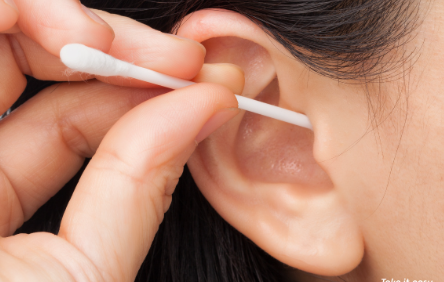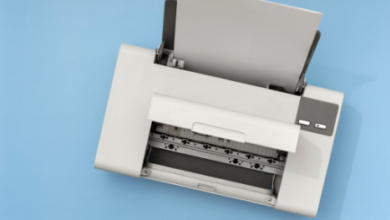Keeping Ears Clear: The Importance of Ear Wax Removal and Cleaning in Preventing Ear Infections

Ear wax, medically known as cerumen, is a natural substance produced by glands in the ear canal. While often perceived as dirty or bothersome, ear wax plays a crucial role in protecting the ear canal from dust, debris, and microbial invaders. However, excessive buildup of ear wax can lead to ear discomfort, hearing impairment, and even ear infections. In this article, we delve into the importance of ear wax removal and cleaning as a preventative measure for ear infections, exploring effective methods and best practices for maintaining ear health.
Understanding Ear Wax and Its Functions:
Ear wax serves several important functions in the ear canal:
- Lubrication: Ear wax helps lubricate the ear canal, preventing dryness and irritation of the delicate skin lining.
- Protection: Ear wax forms a protective barrier that traps dust, dirt, and foreign particles, preventing them from reaching the eardrum and causing damage or infection.
- Antibacterial Properties: Ear wax contains antimicrobial properties that help inhibit the growth of bacteria and fungi in the ear canal, reducing the risk of infections.
Despite its protective benefits, excessive accumulation of ear wax can occur due to factors such as genetics, age, ear canal shape, and use of hearing aids or earplugs. When left untreated, impacted ear wax can lead to a range of symptoms, including earache, itching, hearing loss, ringing in the ears (tinnitus), and a sensation of fullness or pressure in the ear.
Read more Mastering Color Management and Consistency in Digitally Printed Packaging Solutions
Importance of Ear Wax Removal and Cleaning:
Regular ear wax removal and cleaning are essential for maintaining ear health and preventing complications such as ear infections. Here’s why it’s important:
- Prevents Impaction: Removing excess ear wax prevents it from becoming impacted or compacted in the ear canal, which can obstruct the ear canal and impair hearing.
- Reduces Infection Risk: Accumulated ear wax creates a warm, moist environment that promotes bacterial and fungal growth, increasing the risk of ear infections such as otitis externa (swimmer’s ear) or otitis media (middle ear infection).
- Improves Hearing: By clearing the ear canal of excess wax, individuals can experience improved hearing clarity and sensitivity, allowing sound waves to reach the eardrum unimpeded.
- Alleviates Discomfort: Ear wax buildup can cause discomfort, itching, and a sensation of fullness or pressure in the ear. Regular removal and cleaning help alleviate these symptoms and promote ear comfort.
Methods of Ear Wax Removal and Cleaning:
Several methods can be used to remove excess ear wax and clean the ear canal safely and effectively:
- Ear Irrigation: Ear irrigation, also known as ear syringing or ear flushing, involves gently flushing the ear canal with warm water or saline solution to dislodge and remove ear wax. This method should be performed by a healthcare professional to avoid injury to the eardrum or ear canal.
- Ear Drops: Over-the-counter ear drops containing softening agents such as mineral oil, hydrogen peroxide, or glycerin can help soften and loosen ear wax, making it easier to remove. Follow the manufacturer’s instructions carefully when using ear drops.
- Ear Wax Removal Kits: Ear wax removal kits, available at pharmacies, typically include softening drops and a bulb syringe or irrigation bottle for flushing the ear canal. These kits can be used at home but should be used with caution to avoid injury.
- Ear Canal Suction: Microsuction or suctioning devices may be used by healthcare professionals to remove stubborn or impacted ear wax safely. This method provides precise suction control and minimizes the risk of injury to the ear canal.
Best Practices for Ear Wax Removal and Cleaning:
When performing toronto ear wax removal and cleaning at home, it’s important to follow these best practices to avoid injury or complications:
- Avoid Using Cotton Swabs: Cotton swabs, bobby pins, or other objects should never be inserted into the ear canal to remove ear wax, as they can push the wax deeper into the ear or cause injury to the eardrum.
- Use Warm Water: When irrigating the ear canal, use lukewarm water or saline solution to avoid discomfort or injury from cold water.
- Seek Professional Help: If you experience symptoms of impacted ear wax, such as ear pain, hearing loss, or ringing in the ears, consult a healthcare professional for evaluation and treatment. They can safely remove excess ear wax and provide guidance on ear care.
- Avoid Overcleaning: While it’s important to maintain ear hygiene, excessive or aggressive cleaning of the ear canal can disrupt the natural balance of ear wax and increase the risk of irritation or infection. Clean the outer ear gently with a damp cloth and avoid inserting objects into the ear canal.
Conclusion:
In conclusion, ear wax removal and cleaning play a vital role in maintaining ear health and preventing complications such as ear infections. By understanding the functions of ear wax, recognizing the importance of regular cleaning, and following safe and effective removal methods, individuals can promote ear hygiene and reduce the risk of ear-related problems. Whether performed at home or by a healthcare professional, ear wax removal should be approached with care and caution to ensure the safety and well-being of the ears. Remember, when it comes to ear health, prevention is key.







